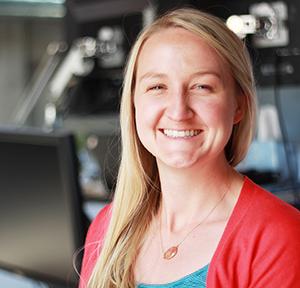Episode 026 - Jen Carlile

Brian catches up with Jen Carlile, Co-Founder of Flux Factory at the at the Design Modelling Symposium in Copenhagen.
Show Notes:
-
Jen Carlile is the co-founder of Flux.io
-
The other co-founder is Nick Chim
-
-
This interview took place at the Design Modeling Symposium in Copenhagen where Jen was a keynote speaker
-
Daniel Davis, who briefly held the Zach’s co-hosting position in Copenhagen, has since been fired
-
Flux is a Google X offshoot tech company invested in sustainable architecture at scale
-
Their first mass-market product is an interoperability tool set that connects designers’ tools such as Grasshopper, Dynamo, and Excel with more connections coming soon (and an SDK!)
-
For more on their interoperability tools check out their YouTube channel
-
To get access to the tools sign up here!
-
-
Flux had previously made waves with Flux Metro: Austin Preview, which allows users to preview the Austin development code’s impact on their building designs in an automated manner
-
Copenhagen’s Noma has long been considered the best restaurant in the world
-
Wait, nope, nevermind
-
-
Many of the chefs at Noma have since started other amazing restaurants in Copenhagen, such as Amass by Matt Orlando and Bo Bratlann
-
Think of Amass like a Koolhaas kid of the restaurant world
-
-
Version control in third party visual programming libraries has long been a thorny issue in AECO. Attempts to address is include Dynamo’s Package Manager and community hacks such as Hydra which utilizes Github repos for Grasshopper version tracking
-
Web UIs allow non-experts to use bespoke tools developed using visual programming platforms, whose methods may be less accessible to traditional designers. Flux has a custom UI module under development and Dynamo has recently released a beta of the Customizer
-
Messy visual programming graphs are called “hydras” or “spaghetti” and are difficult to use for debugging or collaboration. Often the very person who authored them fails to understand their logic if they haven’t been in the file for more than a few weeks
-
The Flow is Flux’s web-based visual programming environment which is organized into Streams (macro-level modules), and Stages (modules within the macro-level modules). Intermediate data-viewing columns between the stages allow for the visualization of data flow
-
Basically Slack is just Google Wave but now everyone’s into it
-
Wave died in 2012 with Reader following in 2013
-
Tech debt is a phrase used to describe the consequence of doing things the “quick and dirty” way only to have to invest double the time later in cleaning it up
-
PD, or Pure Data, is an open source visual programming environment similar to MaxMSP - both are often used in music and professional audio (Jen’s former wheelhouse prior to tackling the AECO industry with Flux)
-
Quartz is a collaborative open data initiative by Flux, Healthy Building Network, Google, and thinkstep that aims to quantify building product impact on human and environmental health through a universally-accessible materials LCA (Life-Cycle Assessment) database
-
Kieran Timberlake’s Tally plug-in for Revit is tackling similar issues
-
HPD’s (Healthy Product Declarations) are an open standard document format for accurately reporting material contents and health hazards
-
The BART (Bay Area “Rapid” Transit) is a terrible way to move around the Bay Area
-
Jen often includes the Smurfs in her unit tests
-
Here’s Daft Punk’s Get Lucky in Mario Paint Composer
-
Whiteboard tables are the new startup hotness
Lightning round:
-
What book(s) are you reading right now?
-
What music are you listening to right now?
-
What’s your favorite retro-game?
-
What’s your favorite childhood cartoon?
-
Describe your productivity ritual.
-
Grab multiple sheets of paper and a wood board and go sit in a corner with earplugs and noise-canceling headphones - consider aspects of a problem (code, document, etc.) as non-hierarchical spatial areas on a page - sketching is important even when coding
-
-
WHAT IS ARCHITECTURE???!!! In one sentence.
-
Creating spaces for people
-
-
BONUS QUESTION: What was the most profound or exciting idea presented at DMS Copenhagen?
-
The ideas coming out of ETH Zurich’s Prof Dr Gerhard Schmitt’s Future Cities Laboratory (not to be confused with Future Cities Lab…)
-
Jonathan Mallie’s work at SHoP and now at JLM on workflow convergence from design concept to shop drawings using PLM (Product Lifecycle Management) techniques and cloud CATIA - Barclay’s Center is an excellent example of this
Want to Contribute?
Want to be an author? Drop us a line here we'd love to have you.
Already have a video you'd like to post? Send us a link and we'll get you going.
:)



